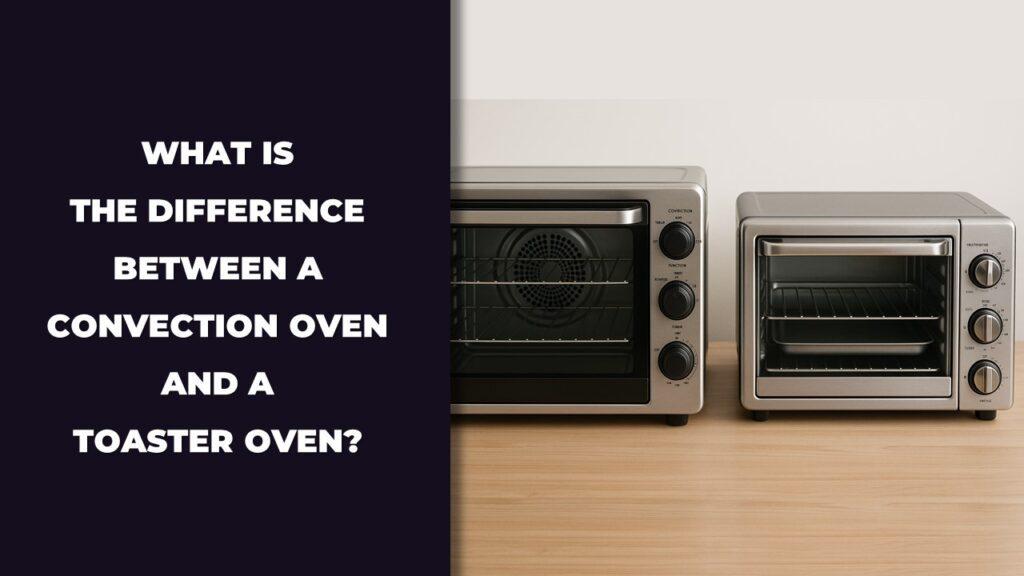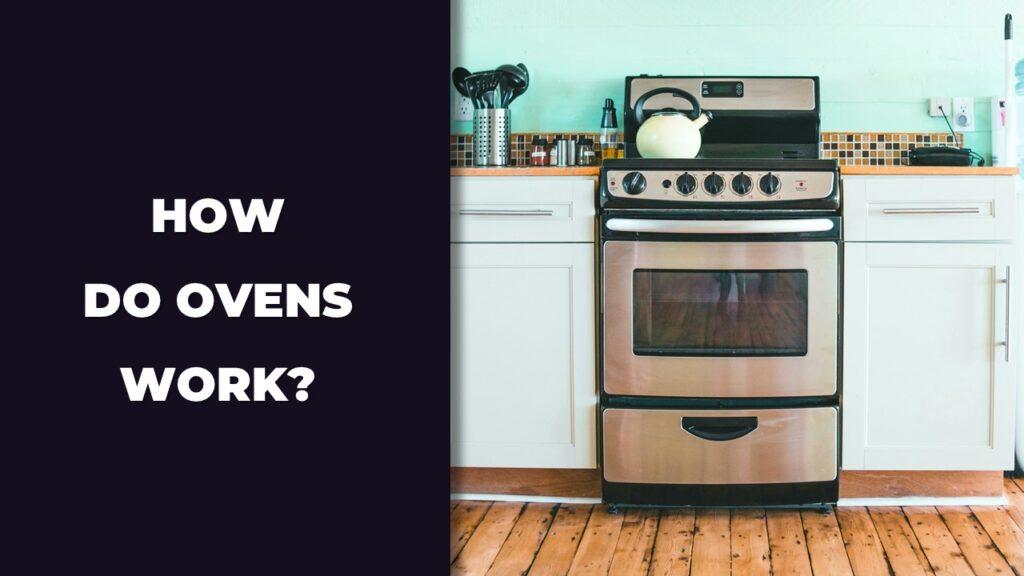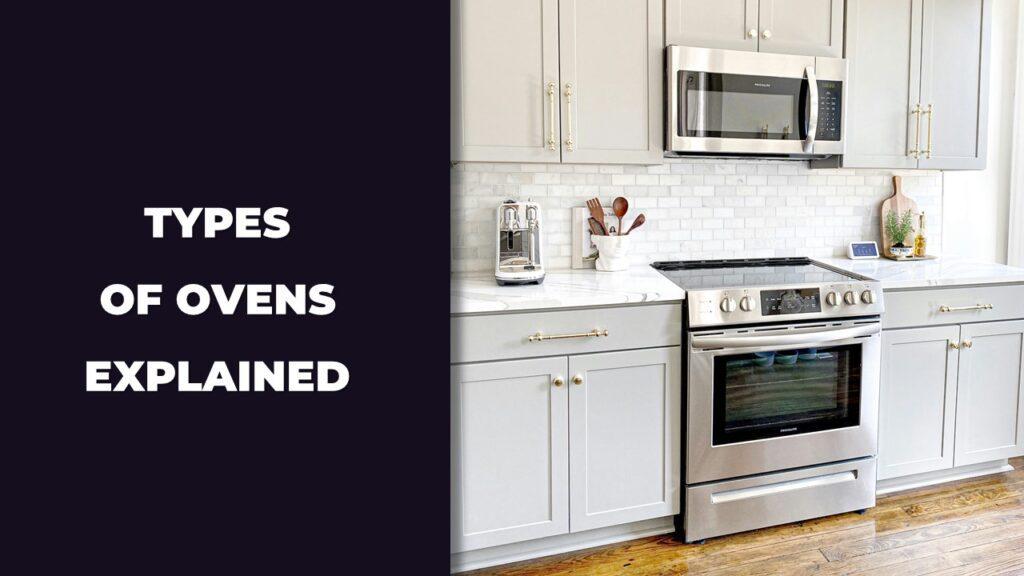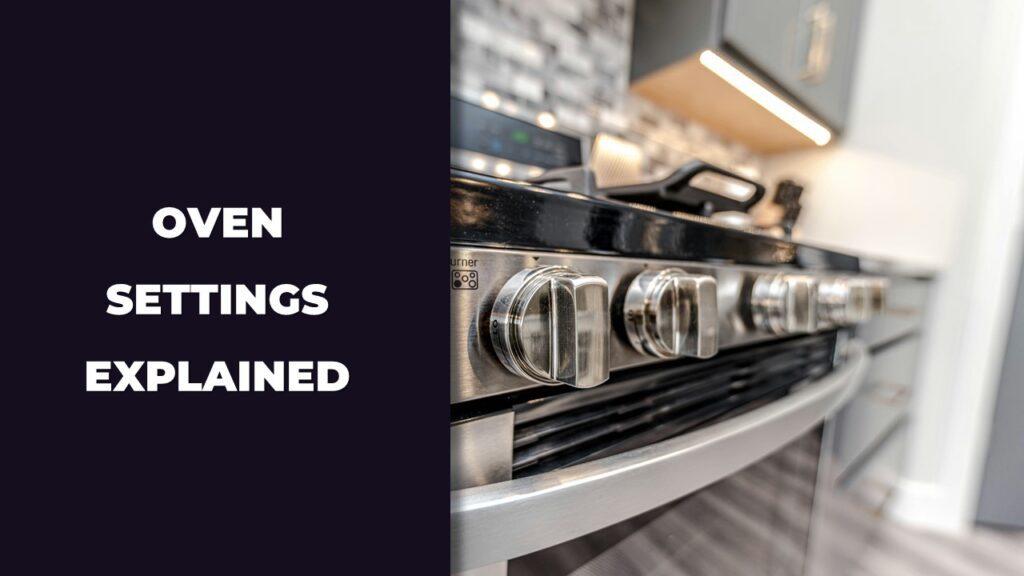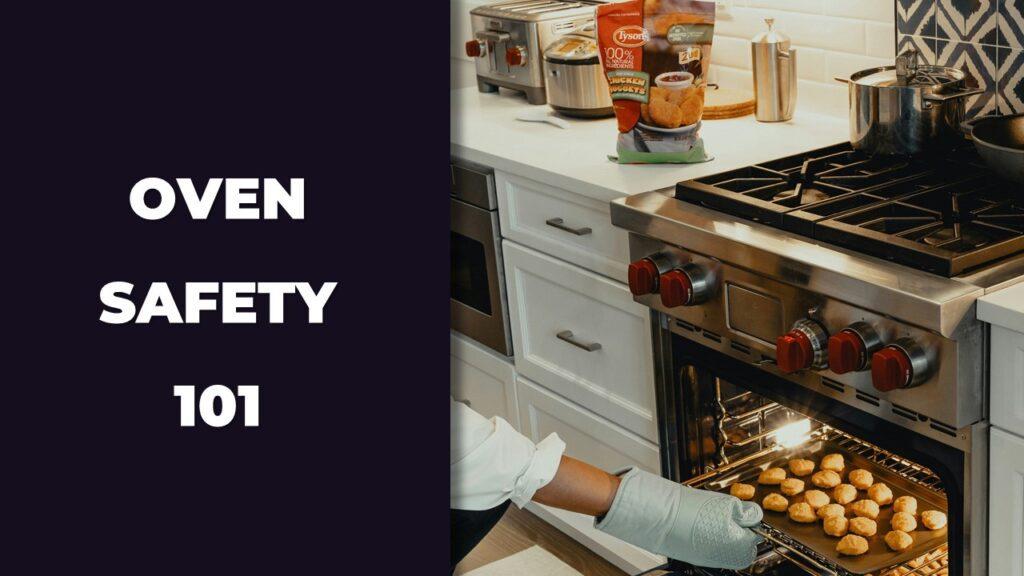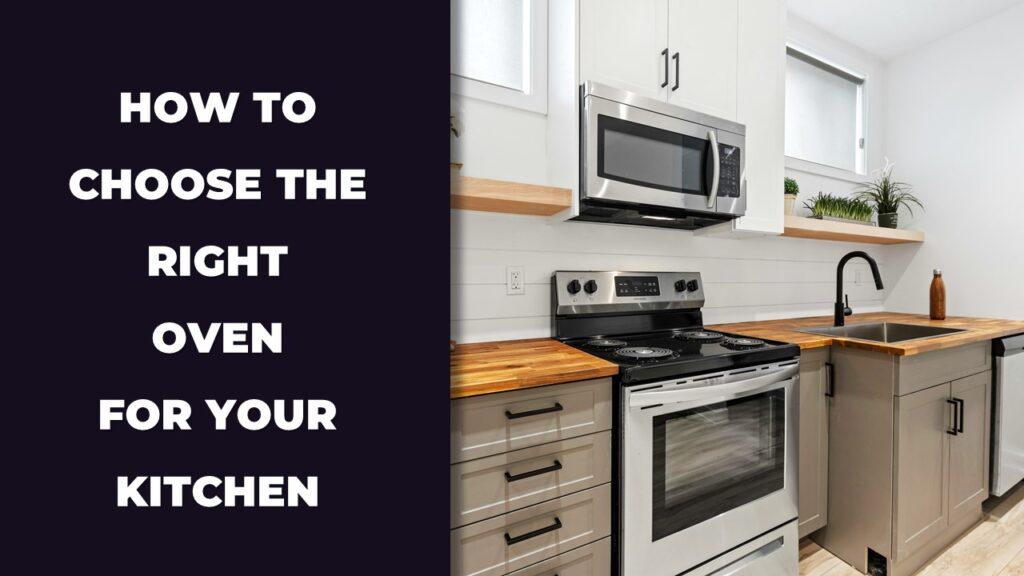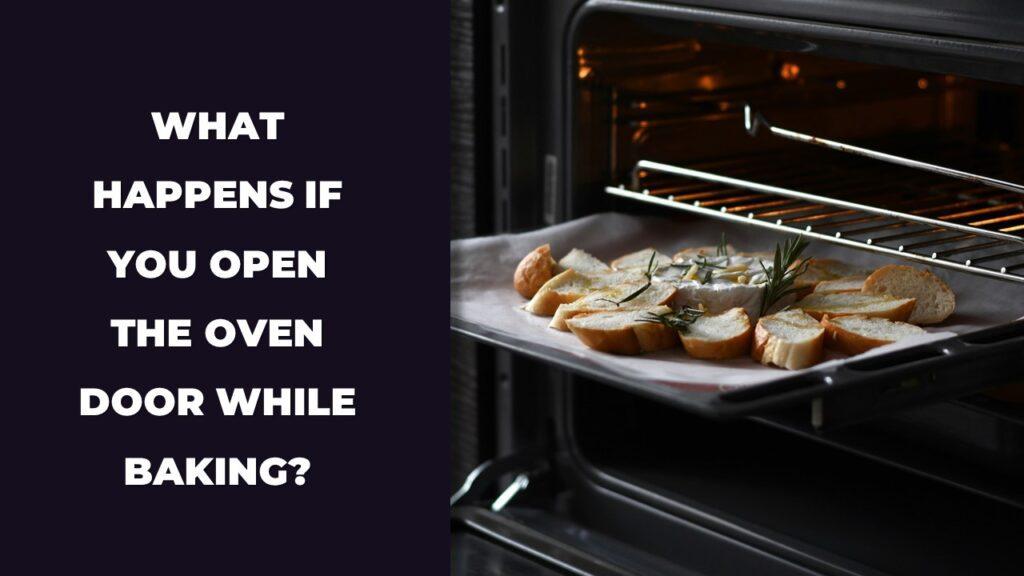
Opening the oven door while baking lets out a big rush of heat, which can cause your cake or cookies to collapse, bake unevenly, or take longer to finish. The sudden temperature drop messes with how your food cooks, especially if it needs steady heat to rise properly. Cakes are the most sensitive, but breads, cookies, and even roasts can suffer if you peek too soon or too often.
In this article, we’re going to talk about what really happens when you open the oven door mid-bake. We’ll also walk through when it’s okay to check your food, how to avoid messing up your bake, and tips to get it right without opening the door.
Does Opening The Oven Door Really Affect Baking?
Yes, opening the oven door while baking can cause heat to escape instantly—dropping the internal temperature by 25°F to 50°F in just a few seconds. This temperature drop can ruin delicate baked goods like sponge cakes, soufflés, and puff pastry, making them fall or turn dense. Even heartier dishes like casseroles or roast chicken can end up unevenly cooked or dry.
For example, if you’re baking a cake at 350°F and you open the oven door halfway through, the temperature could drop to 300°F or lower in seconds. The oven then needs 3 to 10 minutes to recover, depending on your oven model, insulation quality, and door size. During this time, your food is cooking at the wrong temperature, which affects texture, rise, and timing.
Baking relies on steady heat. Cakes rise because of chemical leaveners (like baking soda and baking powder) reacting to heat at the right moment. If the heat drops, the rise may stop before the structure sets, leaving the center flat or sunken. Keeping the oven door shut during the first 20 to 30 minutes of baking is especially important for sponge cakes and similar items.
What Actually Happens When You Open The Oven Door?
Opening the oven door mid-bake triggers several problems all at once. Heat escapes, moisture balance is disturbed, and temperature-sensitive reactions inside your food may be interrupted. That quick peek you think will take two seconds can actually change how your dish turns out—sometimes ruining hours of prep work.
Sudden Drop In Internal Temperature
When you open a typical residential oven door, you can lose 25°F to 50°F of internal heat instantly. The larger the door, the greater the drop. For example:
- A 30-inch electric oven may drop from 350°F to around 310°F within 3 seconds.
- A gas oven might drop even faster due to less insulation around the burner cavity.
Modern ovens try to correct this quickly, but even the best ones may take 5 to 12 minutes to fully recover. During that time, airflow inside is disturbed, and your food is cooking at lower, unstable temperatures. If you’re baking something that needs precise timing—like meringue, sponge cake, or a cheesecake—this loss of heat can be disastrous.
Extended Baking Time
When the oven loses heat, your food stalls. This means cooking slows down or stops completely, especially in the center. The outer layers may continue to cook, dry out, or even burn slightly. The result? A cake that’s dry on the outside but still gooey inside.
Here’s a breakdown of how heat loss affects baking time:
- For every 30 seconds the door is open, expect to add 2 to 5 minutes of bake time.
- If the oven drops by 40°F, it can take 5+ minutes to regain full temperature—and longer in older ovens or during winter when room temps are lower.
This affects not just baking time, but quality. For example, brownies left in too long due to heat recovery may go from fudgy to dry. Bread may lose oven spring. Cookies may harden too quickly on the edges and stay raw in the middle.
Uneven Cooking Or Browning
Heat in an oven works through convection (air circulation), radiant heat (walls), and conduction (from the pan). When the door opens, all three systems are thrown off. The back of the oven stays hotter than the front, and the bottom tends to stay warmer than the top. This uneven recovery leads to:
- Cookies with burned bottoms but pale tops.
- Lasagna that’s bubbling in the back corner but still cool in the center.
- Breads with uneven crust and a dense interior.
Even if your oven has a convection fan, once the door is opened, that circulating heat pattern is disrupted and takes time to stabilize again. Heat needs to bounce off the walls and circulate evenly, which only happens in a closed environment.
Collapsing Cakes And Delicate Bakes
Cakes, soufflés, and other rise-dependent bakes are especially vulnerable. Here’s why:
- Most cakes begin to set their structure between 160°F and 180°F internally—usually about 20 to 30 minutes into baking at 350°F.
- If you open the door before that, cold air rushes in and interrupts the rise before the structure is stable.
- The sudden change in air pressure and heat can deflate the cake or collapse the center.
For example, a standard 8-inch sponge cake baking at 350°F for 35 minutes should not be disturbed until at least minute 28. Even a 3-second peek can flatten the cake’s dome and leave a wet center.
Soufflés are even more delicate—they rise using steam pressure. One burst of cool air can make the structure collapse within seconds. That’s why professional bakers often use oven windows and internal thermometers instead of opening the door.
When Is It Okay To Open The Oven Door While Baking?
It’s generally safe to open the oven door during the final quarter of the baking time, once the structure of your baked goods has set. For most cakes, that means after 75 to 80 percent of the baking time has passed. Quick peeks before that can cause baked goods to collapse or cook unevenly.
Still, the timing depends on what you’re baking. Bread, casseroles, and meats give you more flexibility than delicate pastries. The key is knowing when the structure is strong enough and how to open the door without losing too much heat.
Safe Timeframes To Check Your Food
- Cakes: Avoid opening the door for at least the first 25 to 30 minutes of baking if the total time is around 35–45 minutes. If the cake is small (like cupcakes), wait at least 20 minutes.
- Cookies: You can usually check around the halfway mark since cookies bake quickly (8–15 minutes total). For example, if you’re baking at 375°F for 12 minutes, a quick check at minute 6 or 7 is okay.
- Breads: Most bread recipes allow for a check at the two-thirds point. At this stage, the crust is forming, and opening the door won’t impact the rise. Some bakers even mist the oven with water at this stage for a better crust.
- Meats and Casseroles: These are more forgiving. You can open the oven to baste, rotate, or check temp halfway through or near the end. Just be quick and try not to open repeatedly.
Quick Checks That Minimize Heat Loss
- Turn on the oven light first. Only open the door if you can’t see enough through the window.
- Open the door just a crack. Use a towel or oven mitt to crack the door 2–3 inches if you’re rotating pans or checking browning.
- Be ready with your tools. If you’re testing a cake with a toothpick, have it in your hand before opening. Keep the door open for less than 5–7 seconds.
- Close the door gently. Slamming it creates air pressure that can also affect delicate items.
Tips To Monitor Food Without Opening The Oven Door
You can keep a close eye on your food without touching the oven door by using the right tools and looking for visual clues. Most modern ovens are designed to help you check progress without heat loss—if you know where to look.
- Use The Oven Window: Clean the glass before baking so you can see clearly. Make sure your food is placed on the middle rack so it’s visible.
- Use The Oven Light: Flip the switch instead of opening the door. Avoid turning the light on and off frequently, as bulbs get hot and may burn out.
- Look For Surface Changes:
- Cakes: Go from shiny to matte when fully baked. The edges pull slightly from the pan.
- Cookies: Should look set in the center with golden edges.
- Breads: Have an even golden crust and may make a hollow sound when tapped (useful after taking them out).
- Use A Digital Probe Thermometer: These thermometers come with a heat-safe probe on a long wire and a screen that sits outside the oven. You can track the food’s internal temp without opening the door.
- Use An Oven Thermometer With A Visible Dial: Place it inside your oven near the front. Make sure it’s readable through the glass.
Common Baking Mistakes Related To Oven Door Use
Opening the oven door too soon or too often is one of the most common reasons baked goods turn out wrong. Here’s what to avoid if you want consistent, great results:
- Peeking During The First Half Of Baking: Especially for cakes and soufflés. The internal structure hasn’t set yet, and the sudden cold air can ruin the rise.
- Repeated Door Opening “Just To Check”: Every time you open the door, you lose up to 50°F of heat. Multiple openings mean uneven baking, longer cook times, and poor texture.
- Rotating Too Early: Spinning trays before the food sets can cause batter to shift, making cakes bake lopsided or cookies spread unevenly.
- Baking Without A Thermometer Or Timer: Guessing your bake time leads to more door opening. Use a reliable kitchen timer and, if possible, an oven thermometer for accuracy.
- Using The Oven Light Too Late: If the window is foggy or the light is dim, you’ll be tempted to open the door. Clean the glass and test the bulb before preheating.
Expert Advice And Best Practices For Successful Baking
To avoid common baking problems, keep your oven door closed during the most sensitive parts of baking, especially when rise and structure are at stake. Most issues come down to heat loss, which is easy to prevent with a few good habits.
- Wait Until At Least 75% Of The Bake Time Passes: For a 40-minute cake, that means no peeking before minute 30. This helps the structure set properly.
- Use Oven Thermometers And Timers: Don’t trust the built-in oven display alone. A separate oven thermometer placed near your baking tray can help you monitor actual internal temps.
- Rely On The Oven Window And Light: Keep the glass clean and turn the light on when needed. Most food gives visible signs of doneness—learn what those look like so you don’t have to open the door.
- Be Quick And Gentle When You Do Open The Door: Open slowly to avoid air pressure shifts. Have tools (toothpick, thermometer, foil) ready before you even reach for the handle.
- Preheat Fully Before Baking: Make sure the oven is truly hot, especially for recipes that start chemical reactions immediately—like puff pastry or yeast bread.
- Place Food In The Center Of The Oven: This gives the most even heat exposure and reduces the need to rotate trays mid-bake.
Final Thoughts
Opening the oven door while baking might seem harmless, but it can quickly throw off your timing, texture, and results. The biggest issue is the sudden drop in temperature, which slows cooking, flattens cakes, and causes uneven browning. Most of these problems can be avoided with just a little patience and a good window view.
If you’re baking something delicate like a sponge cake, resist the urge to peek. That early rise is fragile, and opening the door too soon can stop it in its tracks. For faster-cooking foods like cookies, wait until the halfway point if you must rotate or check.
At the end of the day, your oven does its best work when the door stays shut. Trust your recipe, your tools, and your senses. With the right habits, you’ll get better bakes and fewer surprises every time you open that oven door—for good.
Related FAQs
Will My Cake Fall If I Open The Oven Door Once?
Yes, especially if done before the structure is set, usually during the first 75 percent of the baking time.
How Much Heat Is Lost When You Open The Oven?
Typically between 20°F and 50°F. Recovery can take anywhere from 3 to 10 minutes, depending on oven type.
Can I Open The Door To Rotate Cookies Or Pies?
Yes, but only once you’re halfway through baking. Be quick to avoid losing too much heat.
Is It Different For Convection Ovens?
Yes. Convection ovens recover temperature faster thanks to the fan, but it’s still better to avoid frequent peeking.
Why Do Recipes Warn Not To Open The Oven Early?
Because heat loss early on can stop the rise and result in collapsed or undercooked baked goods.

At our core, we’re a group of passionate households and gardening tools and appliances users and enthusiasts. We dive deep into the world of tech, especially when it’s about your household or gardening electric items. We try to provide as much value to the readers with our information and how to blog articles as possible. For affiliate articles our honest and transparent reviews of essential tech products are rooted in real-world experience. We take great satisfaction in offering unbiased evaluations, ensuring that you can make informed decisions when investing in your desired techs.

